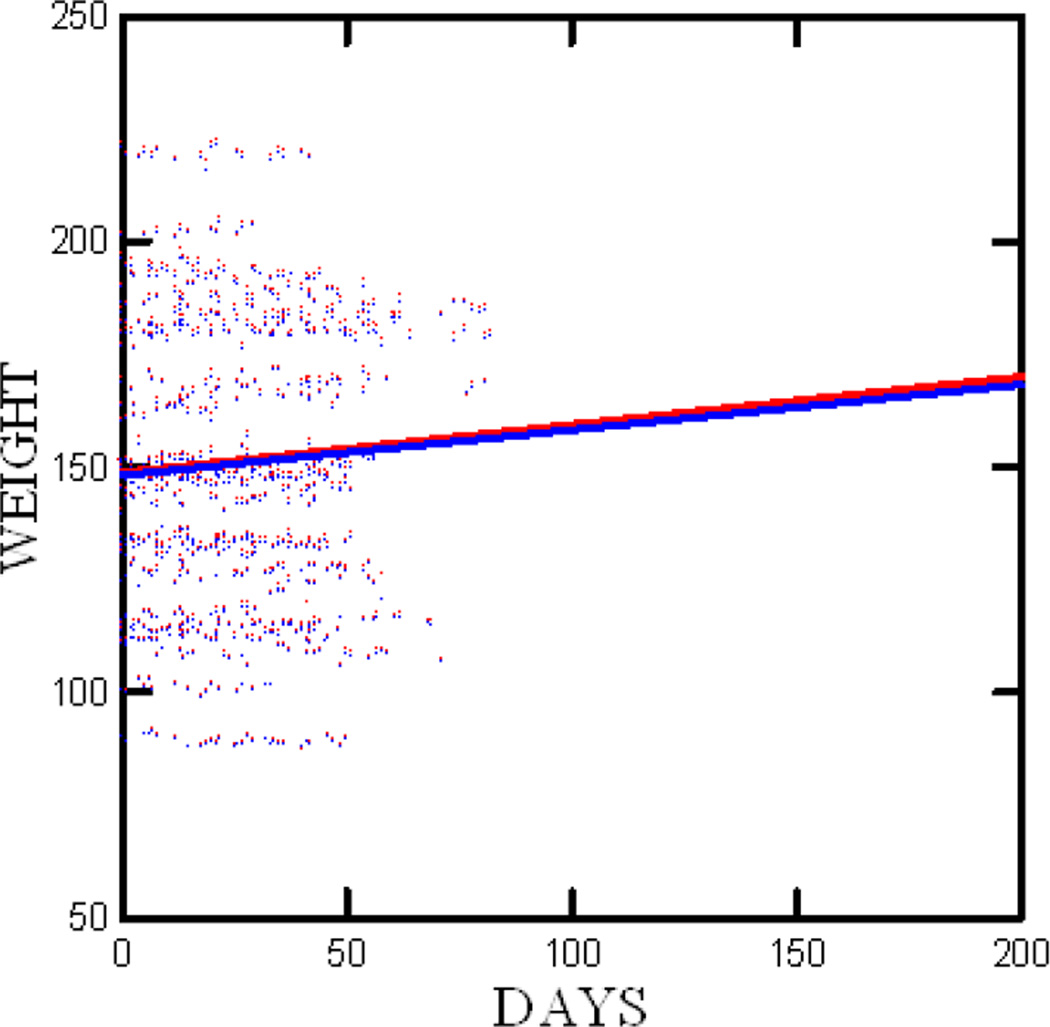Daily weight monitoring is integral to the management of heart failure (HF) [1]. Indeed, weight gain is a marker of HF decompensation, and daily weight monitoring has been associated with favorable prognosis [2]. Until now, assessment of weight has required patients to attend an in-person visit, which provides only an infrequent snapshot of their weight. Remote hovering practices have gained considerable traction during the past several years [3–7], but their use outside of research settings has been limited. We tested the accuracy of remote weight monitoring using the Fitbit® Aria™ weight scale, a commercially available, inexpensive device that communicates data wirelessly, can transmit data remotely to healthcare providers, and yields data that can be banked into medical data repositories.
We recruited 33 healthy employees from an academic medical center. Participants were at least 18 years of age, could read or write in English, and were routinely on campus at least 4 days per week. Participants were excluded if they failed to complete their daily weight assessments.
Each day participants weighed themselves using both the Fitbit® Aria™ and seca 769 scales, the latter of which served as a gold standard comparator. Participants recorded the date and time of their scale reading and the weights reported by both scales to the nearest 0.1lb. Participants provided informed consent, and the study protocol was approved by the local institutional review board.
32 participants provided at least 10 weight readings (minimum, 12; maximum, 41; mean, 26; standard deviation [SD], 7.2). Participants’ weights ranged from 89.8lbs to 224.6lbs, with a mean weight of 150.9lbs (31.2lbs) on the Aria™ scale and a mean weight of 150.2lbs (31.0lbs) on the seca 769.
The Aria™ demonstrated excellent agreement with the seca 769. Multilevel linear regression analysis revealed that the Aria™ systematically provided a weight reading that was 0.6lbs greater than the seca 769, although the two scales did not differ in their assessment of weight over time (Figure).
Figure.
Association of weight (lbs.) and time in days for the Fitbit® Aria™ weighing scale (in red) and the seca 769 clinic scale (in blue)
The flood of inexpensive monitoring devices to the consumer market has introduced new possibilities for remote HF management, but little is known about their accuracy. We demonstrated the accuracy of the Fitbit® Aria™ scale compared to the seca 769, a conventional scale designed for use in clinical practice. Daily information about patients’ weights can alert clinicians to HF patients who are at high risk for hospitalization [8]. Hovering remotely over patients may also engage patients in their own self-management [3, 4].
Acknowledgments
Funding
Dr. Shaffer received salary support from the National Institutes of Health [grant number K23-HL112850] and the American Heart Association [grant number 12CRP8870004]. Additional support for the study from the National Institutes of Health was also received [grant number HL-115941].
Footnotes
Publisher's Disclaimer: This is a PDF file of an unedited manuscript that has been accepted for publication. As a service to our customers we are providing this early version of the manuscript. The manuscript will undergo copyediting, typesetting, and review of the resulting proof before it is published in its final citable form. Please note that during the production process errors may be discovered which could affect the content, and all legal disclaimers that apply to the journal pertain.
References
- 1.McMurray JJV, Adamopoulos S, Anker SD, Auricchio A, Böhm M, Dickstein K, Falk V, Filippatos G, Fonseca C, Gomez-Sanchez MA, Jaarsma T, Køber L, Lip GYH, Maggioni AP, Parkhomenko A, Pieske BM, Popescu BA, Rønnevik PK, Rutten FH, Schwitter J, Seferovic P, Stepinska J, Trindad PT, Voors AA, Zannad F, Zeiher A. ESC Guidelines for the diagnosis and treatment of acute and chronic heart failure 2012. Eur Heart J. 2012;33:1787–1847. doi: 10.1093/eurheartj/ehs104. [DOI] [PubMed] [Google Scholar]
- 2.Goldberg LR, Piette JD, Walsh MN, Frank TA, Jaski BE, Smith AL, Rodriquez R, Mancini DM, Hopton LA, Orav EJ, Loh E WHARF Investigators. Randomized trial of a daily electronic home monitoring system in patients with advanced heart failure: the Weight Monitoring in Heart Failure (WHARF) trial. Am Heart J. 2003;146:705–712. doi: 10.1016/S0002-8703(03)00393-4. [DOI] [PubMed] [Google Scholar]
- 3.Asch DA, Muller RW, Volpp KG. Automated hovering in health care—watching over the 5000 hours. New Engl J Med. 2013;367:1–3. doi: 10.1056/NEJMp1203869. [DOI] [PubMed] [Google Scholar]
- 4.Perednia DA, Allen A. Telemedicine technology and clinical applications. J Am Med Assoc. 1995;273:483–488. [PubMed] [Google Scholar]
- 5.Chase HP, Fiallo-Scharer R, Messer L, et al. Continuous glucose monitoring and intensive treatment of type 1 diabetes. N Engl J Med. 2008;359:1464–1476. doi: 10.1056/NEJMoa0805017. [DOI] [PubMed] [Google Scholar]
- 6.Staessen JA, Thijs L, Fagard R, et al. Predicting cardiovascular risk using conventional vs ambulatory blood pressure in older patients with systolic hypertension. J Am Med Assoc. 1999;282:539–546. doi: 10.1001/jama.282.6.539. [DOI] [PubMed] [Google Scholar]
- 7.Clifford GD, Clifton D. Wireless technology in disease management and medicine. Annu Rev Med. 2012;63:479–492. doi: 10.1146/annurev-med-051210-114650. [DOI] [PubMed] [Google Scholar]
- 8.Chaudhry SI, Wang Y, Concato J, Gill TM, Krumholz HM. Patterns of weight change preceding hospitalization for heart failure. Circulation. 2007;116:1549–1554. doi: 10.1161/CIRCULATIONAHA.107.690768. [DOI] [PMC free article] [PubMed] [Google Scholar]



